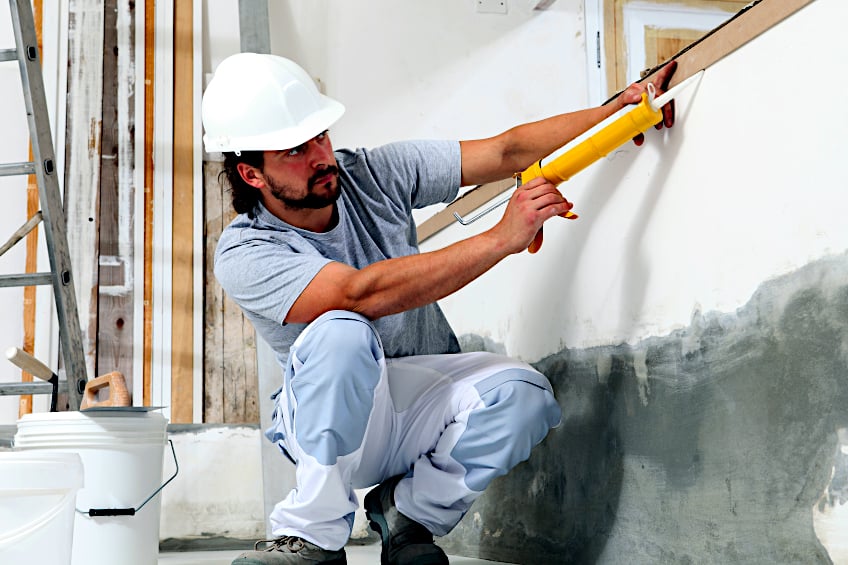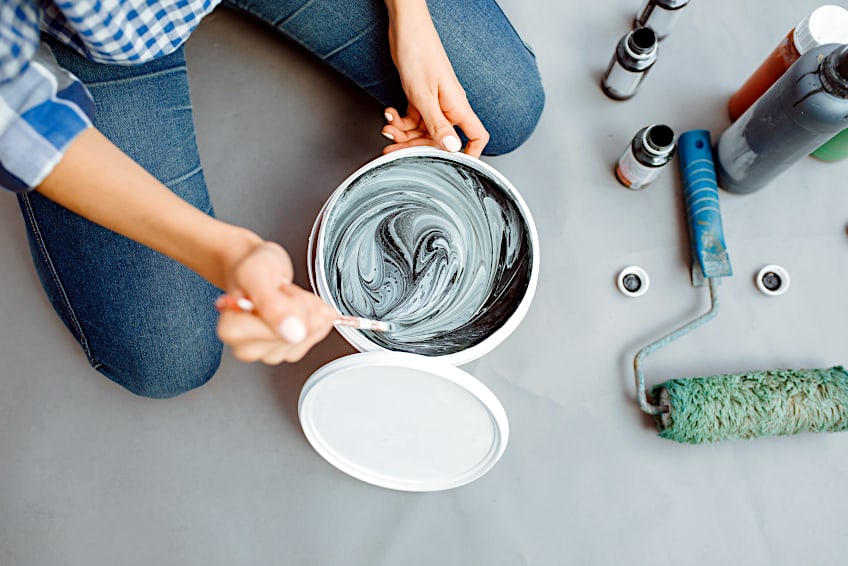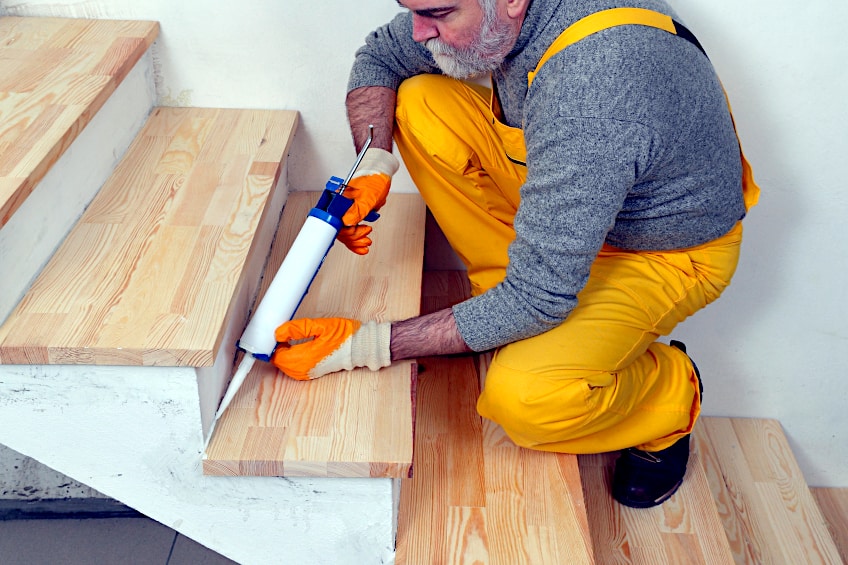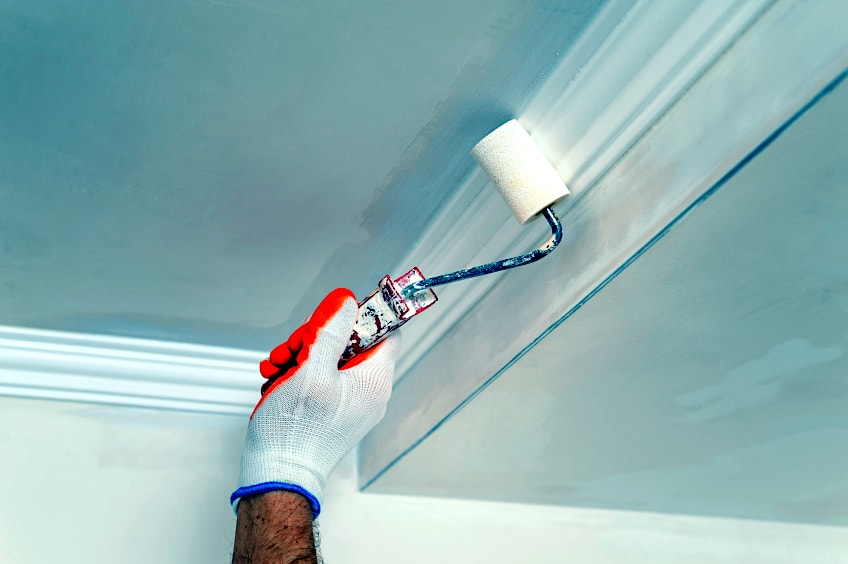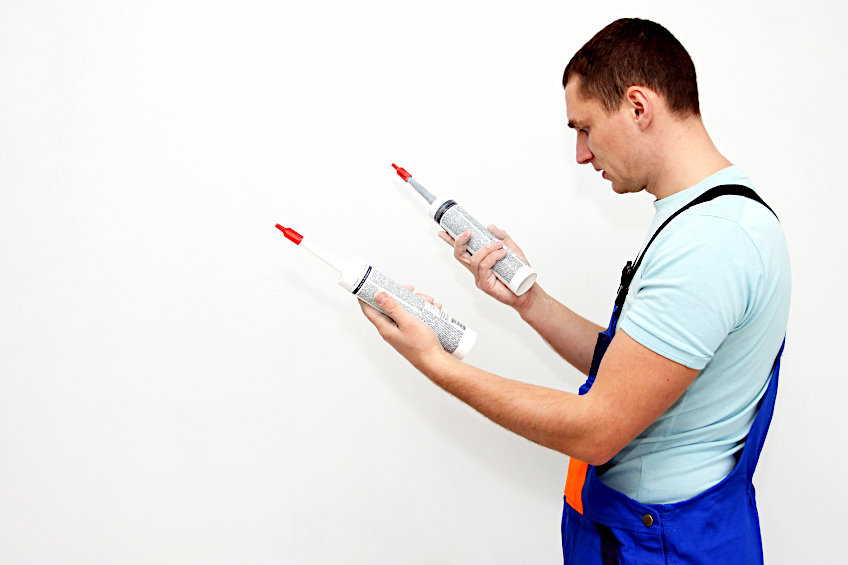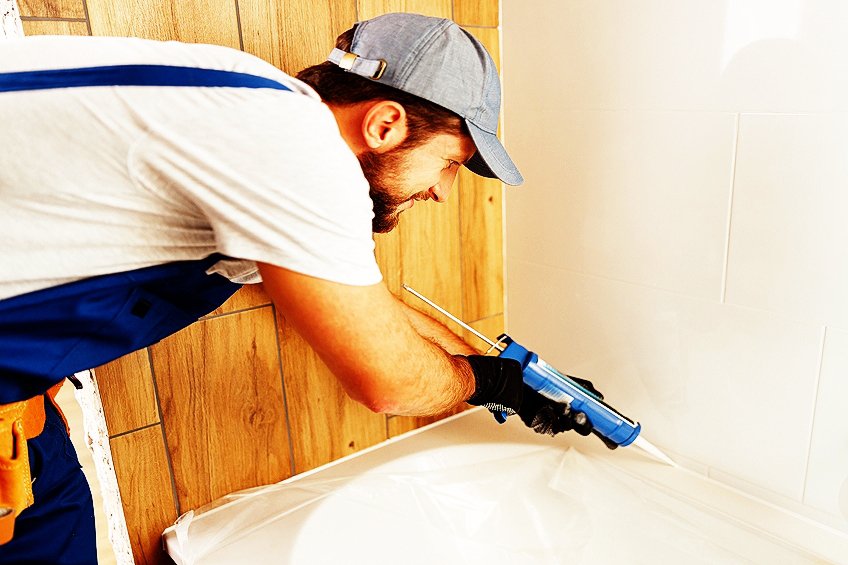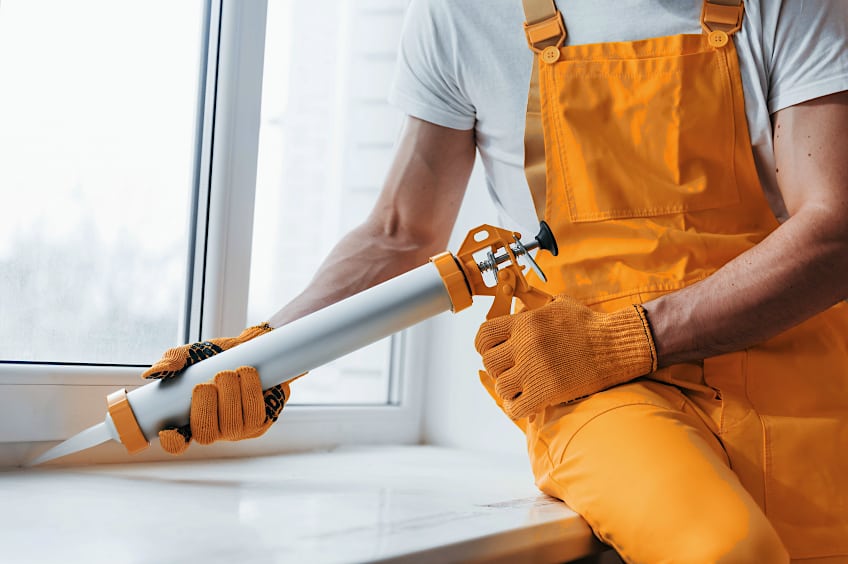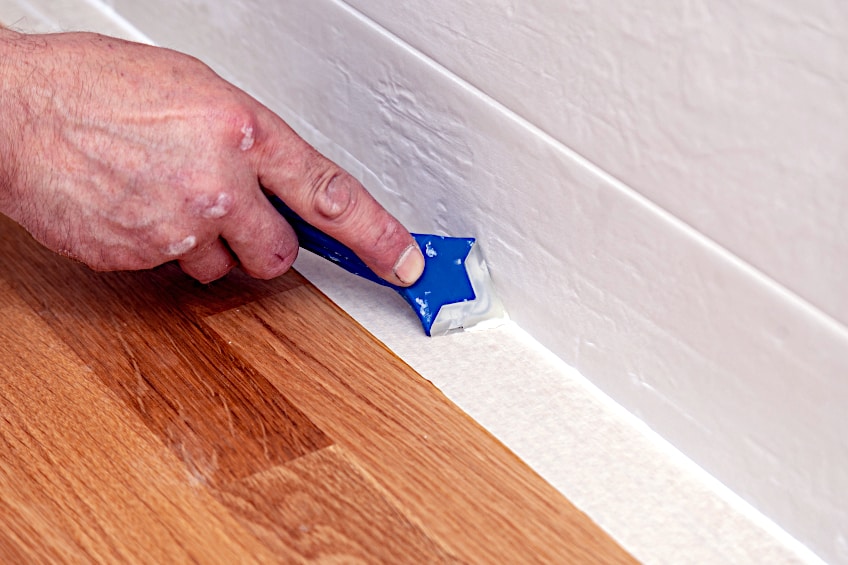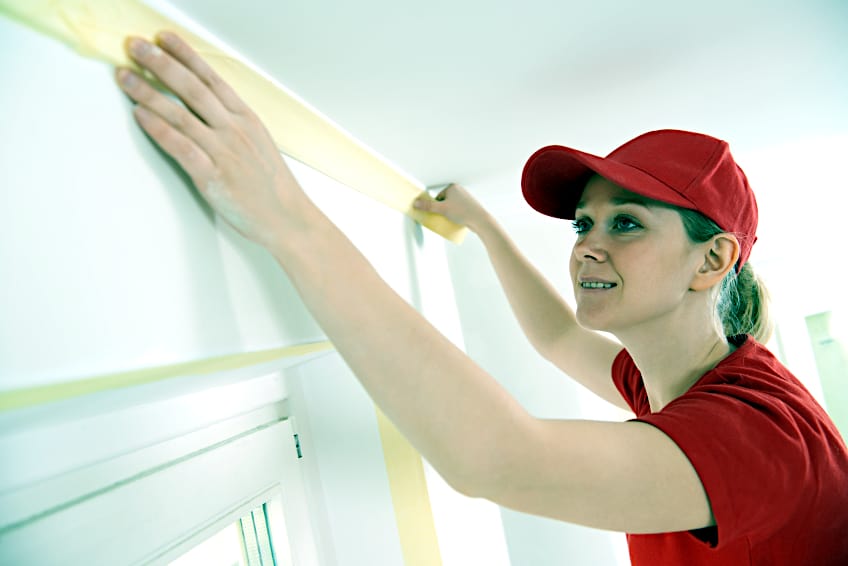Do You Caulk or Paint First? – Best Sequence for Finishing
This post may contain affiliate links. We may earn a small commission from purchases made through them, at no additional cost to you. You help to support resin-expert.com
For as long as there have been people painting, the matter of whether caulk should be applied before or after the paint has been debated. After all, sometimes it is more convenient to do one before the other, but is there a correct order in which to use these products? Let’s have a look at what exactly caulk and paint are, what they are used for, and whether you should use caulk before or after painting your intended surface.
Table of Contents
What Is Paint and Caulk?
Before we get into which one to use first, we thought we’d run through what exactly paint and caulk are as materials. Although they are used in similar applications, their inherent properties and intended purposes are quite different. Knowing the properties and applications of each should clue you in to which one should be used first and when each is applicable.
What Is Paint?
Paint, at its core, is a surface coating. There are many different surface coatings like resin, liquid rubber, and even laminate, but paint is older and more widely used than any of them. Most paints these days consist of a binder, pigment, solvent, and a base. The base of a paint and the use of solvent can vary according to paint type, but most paints contain a type of pigment and a base.
Paints generally work by one applying them to the surface of a workpiece and then leaving them to dry, or until an additional coat can be applied. Once applied, the solvent in the paint evaporates, allowing the mixture to dry and harden, forming your painted surface. Some paints contain no solvents, making them less harmful to the environment, but causes them to take a bit longer to dry.
As you’re probably aware, paint is used on a number of surfaces in various applications and industries all over the world. In everyday life, paint is used in a variety of crafting disciplines and DIY projects, but it’s also used to paint cars, boats, clothing, as well as both the interior and exterior of homes. This is where caulk comes into play.
What Is Caulk?
What is caulk? Caulk can best be described as a waterproof filler and sealant. Caulk is sold on large cylinders that fit inside a caulk gun. When the trigger on the caulking gun is squeezed, a pin applies pressure to the rear of the tube dispensing the caulk onto your intended surface. A simple but effective means of sealing a variety of nooks, gaps and joins.
What is caulk made of? Just as there are many different types of paint there are also different types of caulk. Generally, caulk consists of latex and acrylic materials, which is what allows caulk to expand and contract with varying temperatures. Different types of caulk have different substances in their composition to suit the task at hand, but all of them serve the same general purpose.
Caulk is typically used to fill gaps. Specifically, caulk is used to fill the space between a wall and another surface. A classic example of where caulk is used is on the edges of bathtubs. Caulk is applied in the gap between the tub and wall to ensure that water doesn’t leak down there. It also ensures that insects, dirt, and grime don’t gather in these spaces.
How Caulk and Paint Are Used Together
Caulk and paint are often used together, particularly when bathroom and kitchen renovations are done. Caulk is used to fill the gaps between countertops, bathtubs, sinks, cupboards, and their respective walls. Caulk has become an essential part of any DIY and/or renovation project and is quite effective in all the applications it is used for.
Whether you should caulk before or after painting, or whether you can paint over caulk once it’s been applied are topics that have been discussed to death, but there is merit to both approaches. It can be difficult to decide, but there are factors you can weigh up to decide which approach best suits the specific situation you find yourself in.
What to Consider When Deciding to Caulk or Paint First
Deciding whether to apply caulk or paint first can be frustrating. Luckily, there are a few things you should consider to assist you in making your final choice. To make things even easier for you, we’ve listed them below, so you always know what the best course of action is when deciding whether to paint or caulk first.
The Condition of the Surface
Unfortunately, no surface lasts forever and therefore you’ll need to repaint and re-caulk certain surfaces over time. Whether you paint or caulk first largely depends on the condition of the surface, as you might need to repair and fill the surface, in which case you might consider painting it first before you caulk it. This very rarely is the case, but it’s an important factor to keep in mind.
The Type of Caulk and Paint Being Used
As we mentioned previously there are a number of caulk types out there for you to choose from, and not all of them can be sanded and painted over. Therefore, you might need to apply your caulk last if your caulk cannot be altered once it has been applied.
Keep in mind that some types of caulk also function best when applied directly to your intended surface instead of to a coat of paint.
Pretty much the same thing goes for paint. There are various paint types out there, and some of them don’t do too well when applied to caulk, so it’s best to find out if the paint you have chosen is graded for use on caulk, and whether your caulk can be painted over. The inverse also applies, as some paint types won’t allow the caulk to adhere to them.
The Climate You Live In
Most paint types can only be applied within a certain temperature range, which is typically stated on the container. Attempting to apply it outside of this temperature range could result in the paint failing to dry and cure or curing incorrectly. This is why it is important to know what the ambient temperature and humidity will be like on the day you intend to paint your surface.
The same goes for caulk. Due to the nature of its composition, caulk can only be applied within a certain temperature range. Generally, caulk needs to be applied between the range of 40°F and 90°F to ensure that the caulk is able to harden and expand into the space it’s been applied.
Different caulk types have different temperature tolerances, so be sure to consult your packaging or simply check out the manufacturer’s website.
Pros and Cons of Caulking First
Regardless of your preference, there are some undeniable pros and cons to caulking before your paint. To save you from a trial-by-fire scenario, we’ve put together a list of pros and cons associated with applying your caulk before painting. Remember that this can differ by type of caulk and the situation you find yourself in.
Caulking first has a number of advantages. First off, if you apply your caulk after the surface has been primed it will allow you to paint over the caulk without the caulk standing out underneath the paint, as it will blend in well. Secondly, it ensures that the surface is sealed, which means you won’t have paint running down into the gap during the application process.
You also won’t have to worry about caulking after your paint has been applied. Why would this be a concern you ask? Primarily because a putty knife is used to scrape excess caulk away from the gap, which could damage your fresh coat of paint. Not the ideal scenario, is it? It also means that you won’t have to find a caulk color to match your paint since it will already be underneath it.
There aren’t really any major cons to applying your caulk before the paint is applied. It primarily helps with hiding the caulk line from the viewers since the caulk will be painted over once it has been sanded and trimmed down. However, it does mean that you’ll need to find a trim that is paint and sandpaper friendly, which could restrict your choices.
It also means that you might need to use a certain type of paint, or at the very least apply more than one coat to hide the caulked area. This can be even more challenging if the gap you need to caulk is large, as you will need to ensure that a larger area is seamlessly blended in with the rest of the surface of the wall and joining surface.
- Gets the caulking out of the way first
- Allows you to hide the caulk underneath the paint
- Ensures no paint runs into the gap between surfaces
- Ensures you don’t have to take the color of the caulk into account
- Provides an extra layer of protection to your caulk
- Restricts you from using paint-friendly caulk
- You will need to use sandpaper-friendly caulk
- You might need to apply multiple coats of paint to blend the caulked area
- You will need to repaint the wall if the caulk needs to be replaced
Pros and Cons of Painting First
Just as there are pros and cons to caulking your surface first there are pros and cons to painting first. Painting first is the instinct of many new painters as the caulk is seen as a simple gap filler that doesn’t affect the primary surface, but there are some things you should take into consideration before painting first and caulking second.
Painting before you caulk generally isn’t done. However, if you do choose to do it, you will be able to see if there are any gaps between the wall and joining surface should your caulk degrade over time. You also won’t have to paint over the caulked area if it is large, which means you could avoid potentially needing to apply multiple coats to ensure the caulk blends in with the rest of the wall.
If you paint your surface first, you have the opportunity to do some color blocking by choosing a caulk color that matches the look of the paint and the overall color of the space you are painting. Alternatively, you could choose to paint the caulk a different color entirely if you’re in the mood for a unique and interesting aesthetic.
There are some notable cons to applying your paint before you apply your caulk. For one, your caulk will be exposed and will likely take on more damage over time. This is especially true if you are applying your caulk outdoors or in a bathroom setting. This could lead you to replace your caulk sooner rather than later.
If the area you need to caulk is quite large, you will have quite a bit of caulk simply sitting there, which can distract a viewer from the paint job. It also means that you’ll have to search for a color complement and/or match your paint and surrounding area, which is far easier said than done when it comes to caulk colors. Your paint might also prevent the caulk from adhering to the wall correctly.
- You will be able to see any degradation in your caulk
- You won’t have to blend your caulk into your wall while painting
- You avoid potentially having to apply multiple coats
- You have the opportunity to color your caulk creatively
- You won’t have to remove paint to replace your caulk
- Caulk is exposed and will take on more damage over time
- Caulk might prevent the paint from adhering correctly
- Caulk can be visually distracting to a viewer
- Finding a caulk color to match and/or complement your paint can be difficult
How to Caulk and Paint a Surface
Now that you know whether you can paint over caulk or not, we thought we’d give you a short tutorial detailing how to caulk and paint a surface. This is a relatively simple process that can be done in a day or two. Ensure that you have all the tools for the job before you begin applying your caulk and paint.
Prepare the Surface
Prepare the surface as you would when painting any other. Using some soap and water, clean both the wall and the surface that will be connected to it. Once the surface is clean, stand back and ensure that it has the chance to dry completely. When the surface is dry, sand the wall you will be painting and remove any existing caulk using a caulk knife.
When the wall has been sanded completely and any existing caulk has been removed, grab a clean cloth and remove any paint flakes and bits of caulk that might be present on the surface. Once the surface is clean ensure that you have your brush, roller, primer, paint, and caulk gun ready for the next part of the process.
Prime Your Surface
Priming the surface of your wall is practically the same as painting it. Give the primer container a good shake and pour a little bit out into a paint tray. Get some primer on your brush and cut in any areas that need a steadier approach. When you are done top up your paint tray, dip your roller in, and begin priming the larger surface. Allow the primer to set in and dry as indicated on the container by the manufacturer.
Caulk Any Gaps
Load your caulk tube into the gun. Hold the gun at a 45-degree angle and squeeze out your caulk until the recess has been filled. Drag the nozzle across the recess as you apply sufficient pressure to the trigger until the entire gap has been filled with caulk. Repeat this process until all of the recesses have been nicely filled to the brim.
Once all of your caulk has been applied, it’s time to remove any excess. You can use a caulk trimmer to get the perfect angle and remove just the right amount of caulk for your preference.
Simply place the trimmer at an angle where it is flush with both the wall and the joined surface and run it down the length of the caulk until all of the excesses have been removed. Finally, wait for the caulk to harden.
Paint Your Wall and Caulk
Once your caulk has had a chance to dry, sand the surface of the caulk to create some more surface friction for your paint. Simply take a piece of sandpaper, fold it to create a 90-degree corner, and use this to sand the length of the caulk.
Once you are done, remove caulk particles from the surface using a clean cloth before applying your paint.
To apply your paint, clean your paint tray or primer, give the paint container a good shake, and pour a bit out into the tray. Next, get some paint on your brush and cut in the hard-to-reach areas of your wall, and then your caulk. If it makes you feel more comfortable you can pop down some painter’s tape on the surface of your joining surface to ensure it stays clean.
Once your corners and caulk have been cut in, top up your tray and get some paint on your roller. Paint the rest of your wall and allow each coat to dry before applying any additional ones. You might need to blend in your caulked area with an extra coat or two, so be sure to use your brush when you reach this part.
Now you know whether you should apply caulk or paint first! Remember that this doesn’t apply to every scenario, and sometimes you will need to apply your caulk after the paint has been applied. If you have any doubts about which to do first, don’t be afraid to ask for a helping hand and/or read up on the properties of both your caulk and paint.
Frequently Asked Questions
Can You Paint Over Caulk?
Most people agree that you should caulk before you paint, so can you paint over caulk, then? Yes, caulk can be sanded and painted over provided you have the right type of caulk and paint to pull it off. This is why you should ensure you read up on your products before purchase and/or application.
How Often Should You Paint Your House?
Houses need to be repainted much like any other structure. Exterior paint tends to be very durable and can stand up to the elements for a while, so how often should you paint your house, then? A general rule of thumb is that exterior paint on a home should be reapplied every seven to 10 years.
Should I Use Caulk Or Silicone In Bathroom?
There are many products that can be used to fill in gaps in your bathroom, but some of the most commonly used are silicone and caulk. Which is the better choice though? Most professionals agree that silicone is the better choice for a moisture rich environment like bathrooms.
What Are the Different Types of Caulks?
Just as there are different types of paints, there are also different types of caulk. Some of the best- known caulk types include latex, vinyl, acrylic, silicone, polyurethane, fireproof, and butyl-rubber caulk compound.


